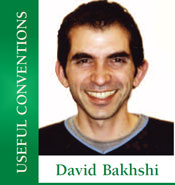OUR second convention is a tool which allows for greater accuracy when judging whether to bid towards slam with minimal values. When seeking to bid low point count slams, it is important to determine whether the partnership’s hands are fitting together well. The key to this often lies in the ability to judge whether a player’s short suit holdings are going to either generate extra tricks by ruffing or reduce the number of losers held in the short suit.
How can this be achieved?
While it is helpful to count points when supporting partner with a balanced hand, it is usually advisable to be bolder with unbalanced hands.






